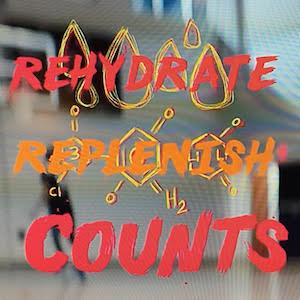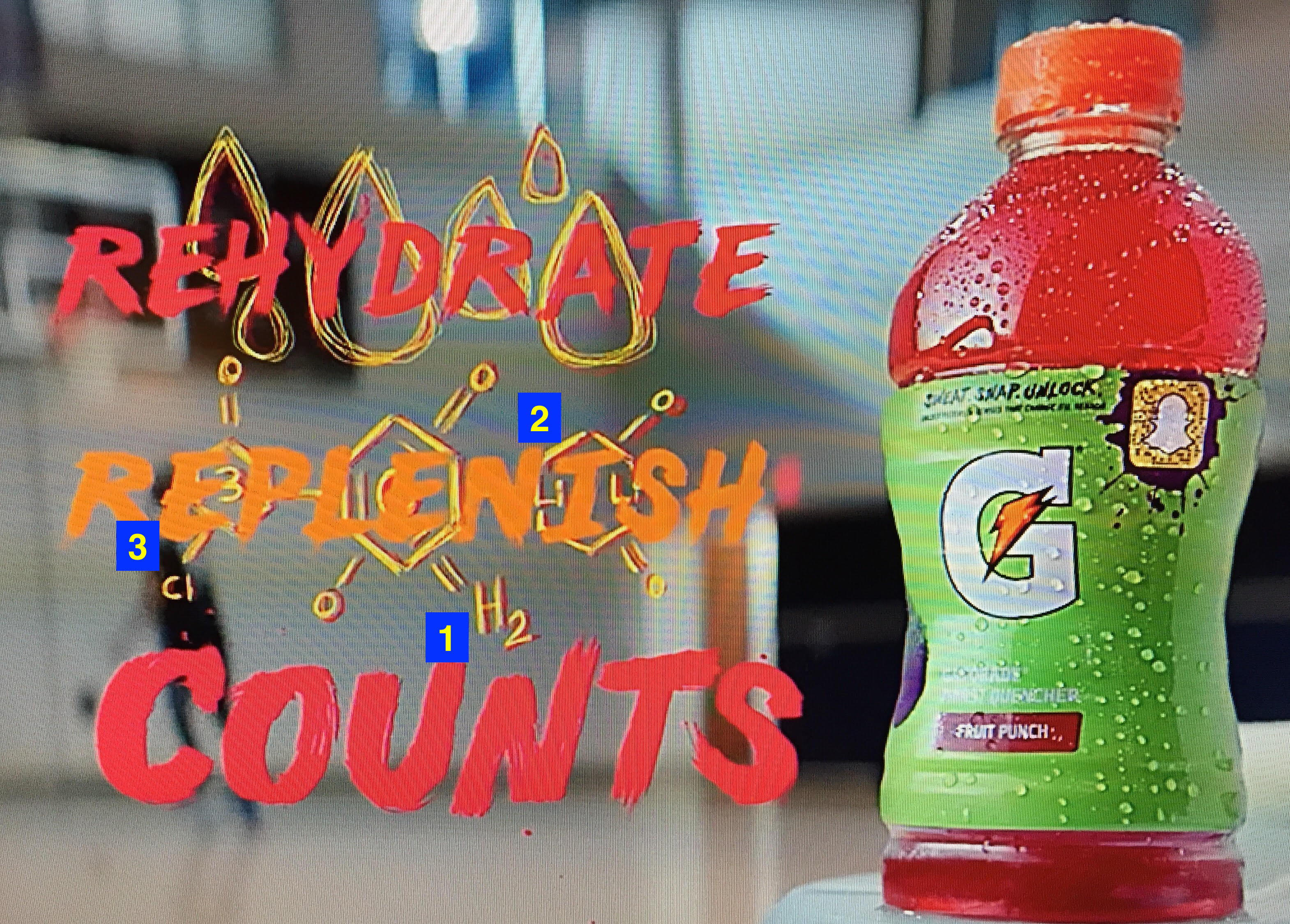
Gatorade needs a better marketing team.
This past Saturday, during a commercial break for college football, Gatorade ran a very curious advertisement. The ad contained a diagram of an organic molecule that, if it actually existed, would probably be dangerous. You certainly wouldn't be drinking it.
Below is a screenshot of the ad. There are multiple problems with the molecule, as noted by the numbers superimposed over the image.
Organic Chemistry for Marketing Majors

Problem #1. Whoever drew this molecule doesn't know the first thing about organic chemistry. This molecule cannot exist. The middle of the molecule features a benzene ring derivative. If hydrogen (H) is a part of the structure, it can only attach as a single bond. The H2 depicted in this molecule, however, attaches to the central benzene ring with a double bond. Impossible. (Similarly, the double bonded oxygen on top of the central ring is also impossible.) Also, hydrogen can only attach as a single atom (H), not as a diatomic molecule (H2). Furthermore, attachments to rings occur at the corners, not on the sides.
Problem #2. The ring on the right side (a fictitious derivative of cyclohexane) contains lithium. Once again, this structure is almost certainly impossible, as lithium usually binds to organic molecules with a single bond. (This diagram depicts lithium being bonded twice, once "above" the atom and once "below" the atom.) Worse, organolithium compounds are highly reactive, and they will react with both oxygen and water. This part of the molecule would be unstable and probably toxic.
Problem #3. The ring on the left side is 3-chlorocyclohexanone. There isn't much information available about this molecule online, but it might serve as an organic solvent. It mysteriously contains a giant "3" in the middle of the structure, presumably referring to the IQ of the person who drew it.
Let's review. This fictitious molecule consists of a benzene ring derivative attached to an organolithium compound on the right and a possible organic solvent on the left. If this molecule actually existed, it would probably be unstable and toxic. You would not drink this.
So What? Who Cares About Gatorade Ads?
Okay, it's a stupid Gatorade ad. But this sort of thing matters.
Imagine if, instead of a fictitious chemical, the ad featured a fictitious map of the United States with San Antonio as the nation's capital. People would rightfully complain, fretting over our ignorance of geography and questioning the intelligence of the people who sell Gatorade. The same reasoning applies here.
We all claim to want a scientifically literate society. Science is hard, so if a company is going to show how scientifically savvy it is, it has a responsibility to get it right. Otherwise, don't do it at all.



